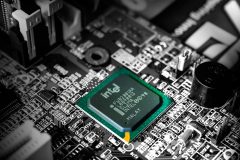Insiders are eagerly awaiting the widespread adoption of the Industrial IoT. Digital automation took time-consuming manual duties and streamlined them to function without any human input. These automation systems are made up of three main components: sensors, logic, and actuators.
The sensors measure the process variables, the logic system determines how the system should respond, and the actuators create a change in the process. Automation systems are treated as a loop. Even though we’ve got equipment measuring every aspect of our industrial processes, decision makers are rarely able to tap into this information.
How the Industrial Internet of Things can help
For a moment, let’s consider how the internet has changed our lives. We’re able to access any information we want at the touch of a button. We can communicate with people in real time, even if they’re on the other side of the world. A simple way to facilitate the exchange of information has changed our entire lives.
It’s also to consider how much our lives have been impacted by technology. Technology controls every aspect of our lives. It distributes the electricity that is delivered to our homes, directs traffic in cities across the world, and silently maintains the essential functions that our society depends on. Technology can’t be programmed to decide what is right or wrong, it can only respond to the input it’s given. When the IIoT becomes standard, the industrial process won’t just be responding to the few limited inputs we’ve assigned to them. They’ll be able to respond to input from anywhere in the world. Nuclear power plants will have time to shut down when an earthquake is detected hundreds of miles away.
Why security is such a problem
Unfortunately, IIoT is in a tough position. The computers that control the essential parts of our lives can effectively be disabled by an input that comes from anywhere. IIoT is only possible because every device shares a common language. It’s designed around a simple concept so that any manufacturer can apply the technology in their own way. Unfortunately, this creates a serious security problem.
In consumer products, the connected hardware is already widely available. One of the most popular devices to become internet enabled was a toaster. The device would send a notification to the owner when their toast was ready. Really, the product was nothing more than a novelty. But hackers took advantage of this system. They managed to download malicious software into almost every internet-enabled toaster on the market and use them in a coordinated denial of service attack that took down several major service providers.
How to solve the unique complexities of IIoT
You might think that it’s unrealistic to compare a toaster to the advanced IIoT systems that are in development. Security has never been a major concern in the toaster industry, and there are well-established security practices in industrial automation. Believe it or not, the systems are very comparable. IIoT will only work if the system uses a simple, standardized protocol that can facilitate communication globally. If the connections are restricted in any way, we’ll never be able to rely on IIoT completely.
When IIoT rolls out, companies stand to make billions of dollars. It might take some time to develop a completely secure system, but you can rest assured that the industrial industry is taking this issue much more seriously than the toaster industry.
Experts have recommended two potential solutions for this security issue. One choice would be to have the government regulate access to the IIoT communication channel. This would make it easy for industry members to join, but unidentified transmissions can be filtered out.
The best option may be a little simpler than that. The IIoT protocol hasn’t been finalized yet. With a few small tweaks, this system could be designed to run on a whole new network. This physical limitation makes it impossible to access the network without the proper equipment. As long as it’s kept in the right hands, this may be the best option we have.


















